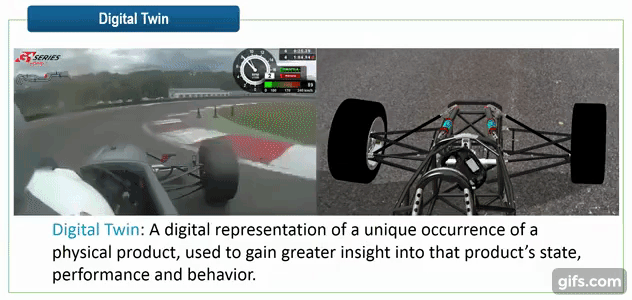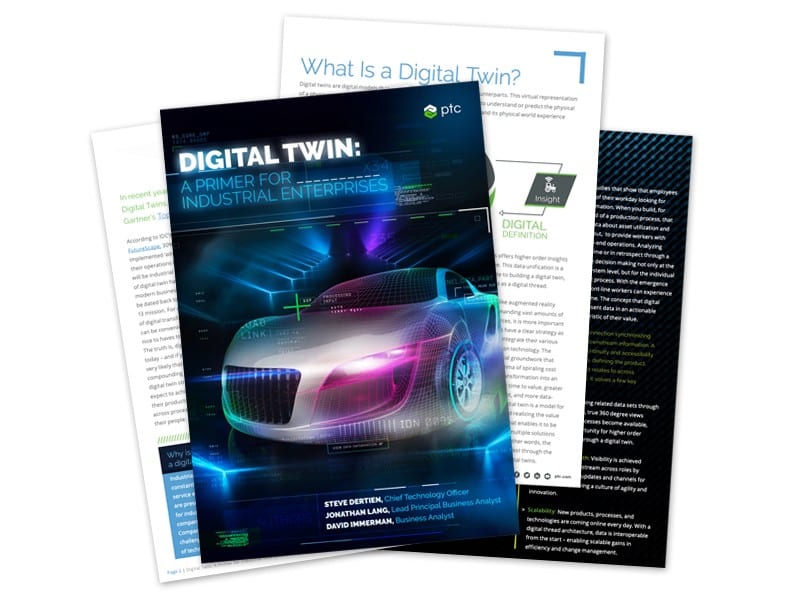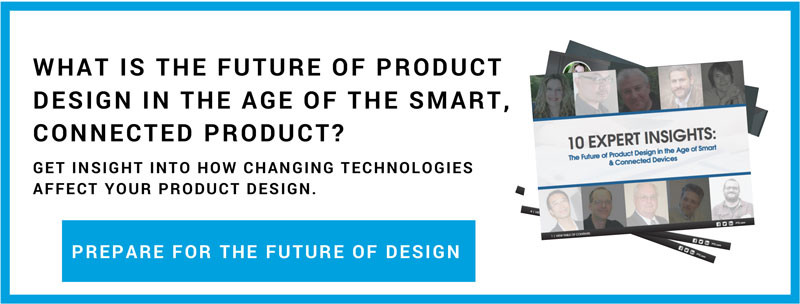Engineers leverage simulation tools to develop innovative and high-performing products in a virtual design space using computer-aided design (CAD) technology.
Imagine what you could do as a designer or engineer if you could take your simulation a step further and study a digital working copy of a product under actual working conditions. It could help you rapidly optimize the design, life, and maintenance of a product.
What is a digital twin?
Companies are collecting real-time operating data from product-mounted sensors. They use the data to create an exact replica of a working product, process, or service. This exact replica, called a digital twin, is a simulated model in a virtual space that performs under real-world conditions to help companies find performance issues, schedule predictive maintenance, reduce downtime, and minimize warranty expenses.
Digital twins drive innovation and performance. They give product development technicians predictive analytics and they give companies the ability to improve customer experience. Digital twins allow for better understanding of customer needs, enhanced existing products, streamlined operations, and improved service-after-sales; all while creating headway for new products and services.
The Internet of Things (IoT) has made it possible for digital twins to exist. IoT platforms bridge the gap between the digital and physical world. How does it work? Smart connected products and smart connected operations are connected to a cloud-based system that receives and processes all the data monitored by sensors.
Using the data captured by sensors, the simulation model, or digital twin, is continuously updated and gives designers and engineers the insight they need to improve future product development efforts. (An example would be visibility into real-world bearing operating temperatures and the downstream effects on tolerances right within a CAD model.)
By studying the digital twin under actual working conditions, companies can see the product in action. Engineers can make more informed choices during the design process and use digital twins to make their simulations more accurate.
Bringing digital twins to life with the Internet of Things
For businesses already using engineering simulation to design products, connecting the simulation to the physical product in the field is necessary to deploy the digital twin solution.
For businesses that are new to simulation, the engineering team would first need to build the 3D product model, optimize its performance, and replicate the real world in which the product system would operate. Re-using this data in similar product simulation scenarios for future product development saves time and money.
In process of applying a digital twin to your design is explained in PTC’s blog as follows:
- Build a product using 3D CAD
- Build a physical prototype of the product
- Add sensors to the prototype
- Build the sensors in the 3D CAD model
- Collect the data (E.g., via ThingWorx)
- Associate the sensors’ data streams to the sensors in your 3D CAD model
- Voila! Now your model can talk.
Not only do digital twins improve future innovation and product development efforts for designers and engineers – they build a stronger relationship between engineering and operations teams.
The data collected from sensors is analyzed by the operations team to optimize performance, service, and maintenance over the lifetime of a product. The digital twin can help organizations avoid costly downtime, repairs, replacements, or stay ahead of other performance issues.


